Many populations throughout the developing world have no access to the specialist healthcare needed by patients who have suffered severe burns, war injuries or congenital disorders. The specialties of plastic and maxillofacial surgery can make a vital contribution and PMFA News is committed to raising awareness of the organisations which provide care and support throughout these areas. Following on from our previous articles from ReSurge Africa, Mercy Ships and Acid Survivors Trust International, we are delighted to bring you information from 2nd Chance, a relatively new charity working in Africa.
There are three big challenges for reconstructive surgery in Africa:
- The fact that many patients who require reconstructive surgery do not have the financial means to pay for treatment and frequently might not even know where healthcare can be accessed.
- The lack of surgical expertise in complex post-burn reconstruction.
- The lack of infrastructure and support, particularly rehabilitation, which is an essential part of the care of these patients.
According to the World Health Organization (WHO), wounds kill more than five million people every year [see www.who.int/violence_injury_prevention/media/en/730.pdf]. These figures obviously explode when the populations are isolated and struck by endemic violence, military conflict or natural disaster. While the humanitarian response to these types of emergencies has evolved positively and efforts are made to bring help and care quickly, survivors are often faced with the long-term effects of their wounds, which alter their physical, psychological and social quality of life. Often patients have to wait for humanitarian missions before they can receive appropriate treatment. Surgeons come from all parts of the world, and as part of these missions will spend several days, weeks or even months, providing care. However, when these expatriate teams are gone, nobody can provide the additional follow-up care needed by post-burn patients and those suffering from congenital disorders or other crippling diseases.
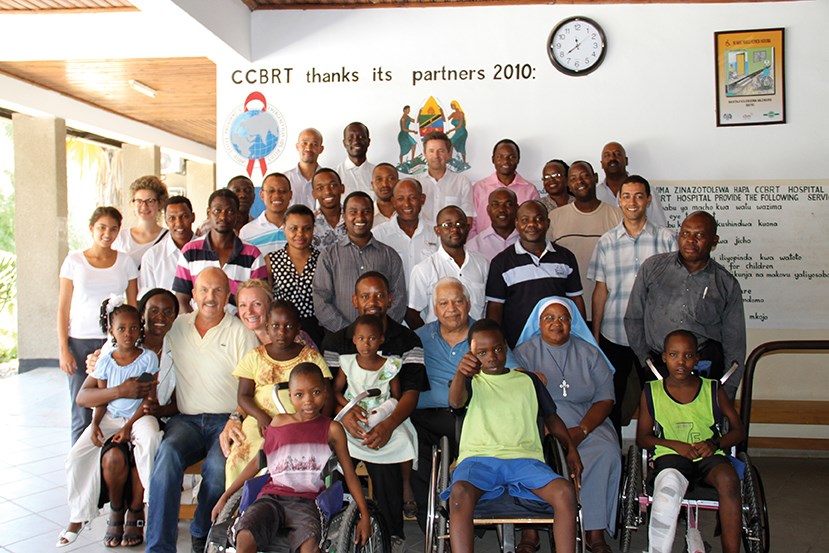
Participants of a 2nd Chance workshop in Dar Es Salaam, Tanzania in October 2012.
Poverty remains a major challenge facing African countries with a huge percentage of the population living in poverty and, as a result, unable to afford the costs of medical care. Additionally, patients in need of surgical care frequently live far away from medical centres so even getting to these centres can involve significant costs and several days of travel.
Sadly many regions in Africa remain ‘medical deserts’. For example, in 2011 the eastern part of the Democratic Republic of Congo, where the population has been devastated by years of conflict, had just 21 registered surgeons for a population of more than 19 million. Training in specialist reconstructive surgery is also severely lacking throughout Africa. According to a recent survey by COSESCA there are 22 plastic surgeons in an area which ideally should have 201. (COSECSA was formed in 1999 to advance education, training, exam standards, research and practice in surgical care by increasing the number of appropriately trained, well qualified surgeons and surgically trained general medical officers. It is an independent body that provides standardised surgical training in nine countries: Ethiopia, Kenya, Malawi, Mozambique, Rwanda, Tanzania, Uganda, Zambia and Zimbabwe). Many of the surgeons self reported their speciality and most would have trained as general surgeons receiving only a limited amount of specialist plastics training. There are currently only two plastic surgery trainees (out of about 210 trainees in total) in the COSECSA system.
Case Study 1
Niela lives in Burundi and was one-year-old when she suffered deep burns to her right hand. Her acute injury was treated but she subsequently developed contractures involving her fingers, and two years on her hand has greatly impaired function. Social security in Burundi is available for children below five-years-old to cover the costs of surgical treatment but local general surgeons lack the necessary training and experience to deal with this kind of pathology. 2nd Chance missions are now training local surgeons in reconstructive surgery enabling them to treat children like Niela.
For this reason, reconstructive surgery patients are handled mainly by general surgeons, paediatric surgeons and at times non-surgeons when necessary. Even at medical training centres, experienced teachers in this field are rare. The training programmes include few topics and little exposure related to reconstructive surgery. The problem therefore compounds over and over.
Adding to the challenge is the fact that reconstructive surgery can be a relatively high cost service, which uses fine techniques, facilities, consumables and instruments. This means that many institutions and centres cannot easily afford them. Nevertheless, good training and experience can allow surgeons with good techniques to provide basic services to patients in need.
“Missions are not so focused on operating on patients but on breaking down the isolation, which exists in the field of training in reconstructive surgery, by facilitating a permanent dialogue between the scientific communities in different countries.”
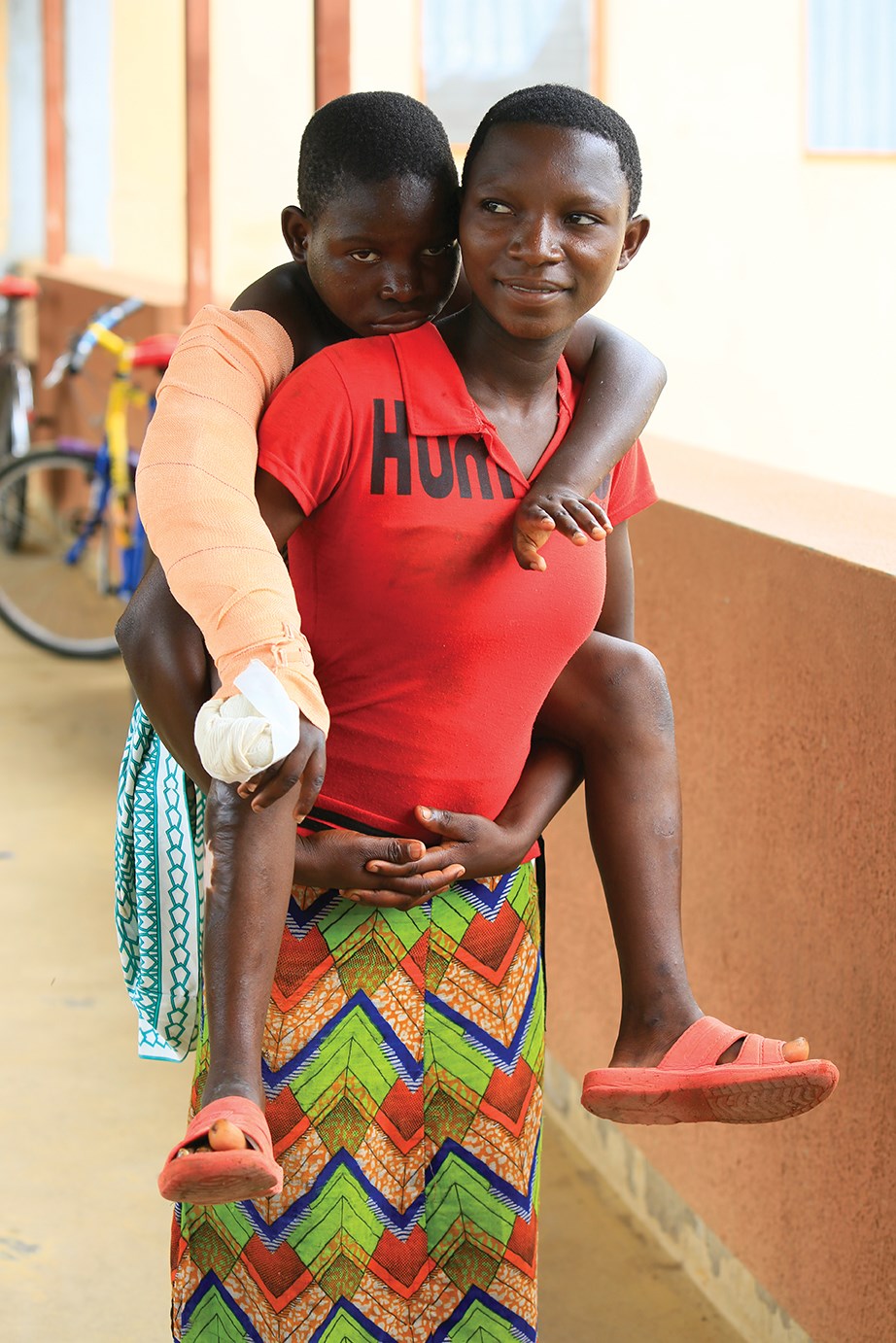
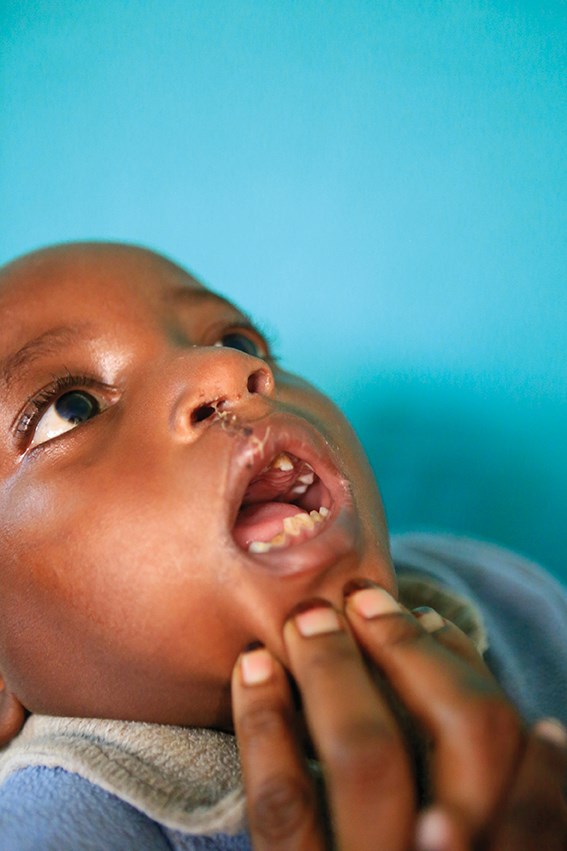
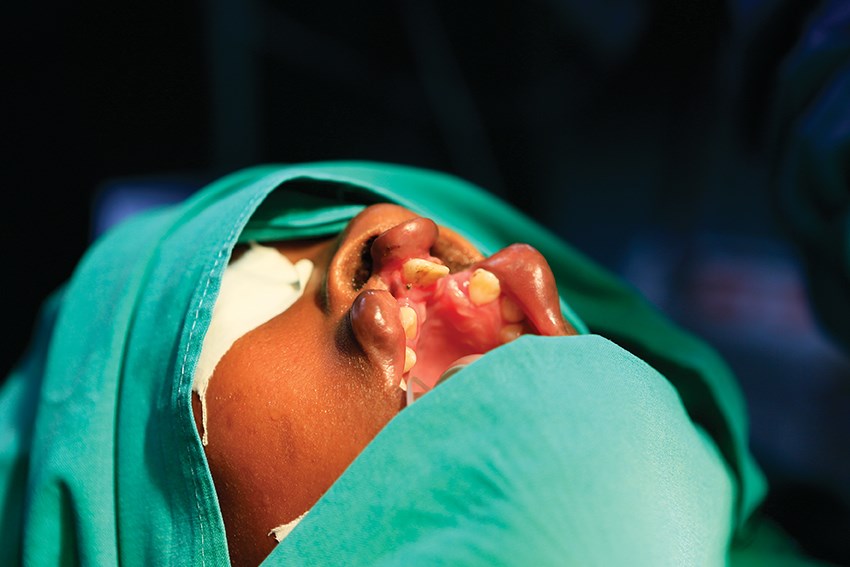
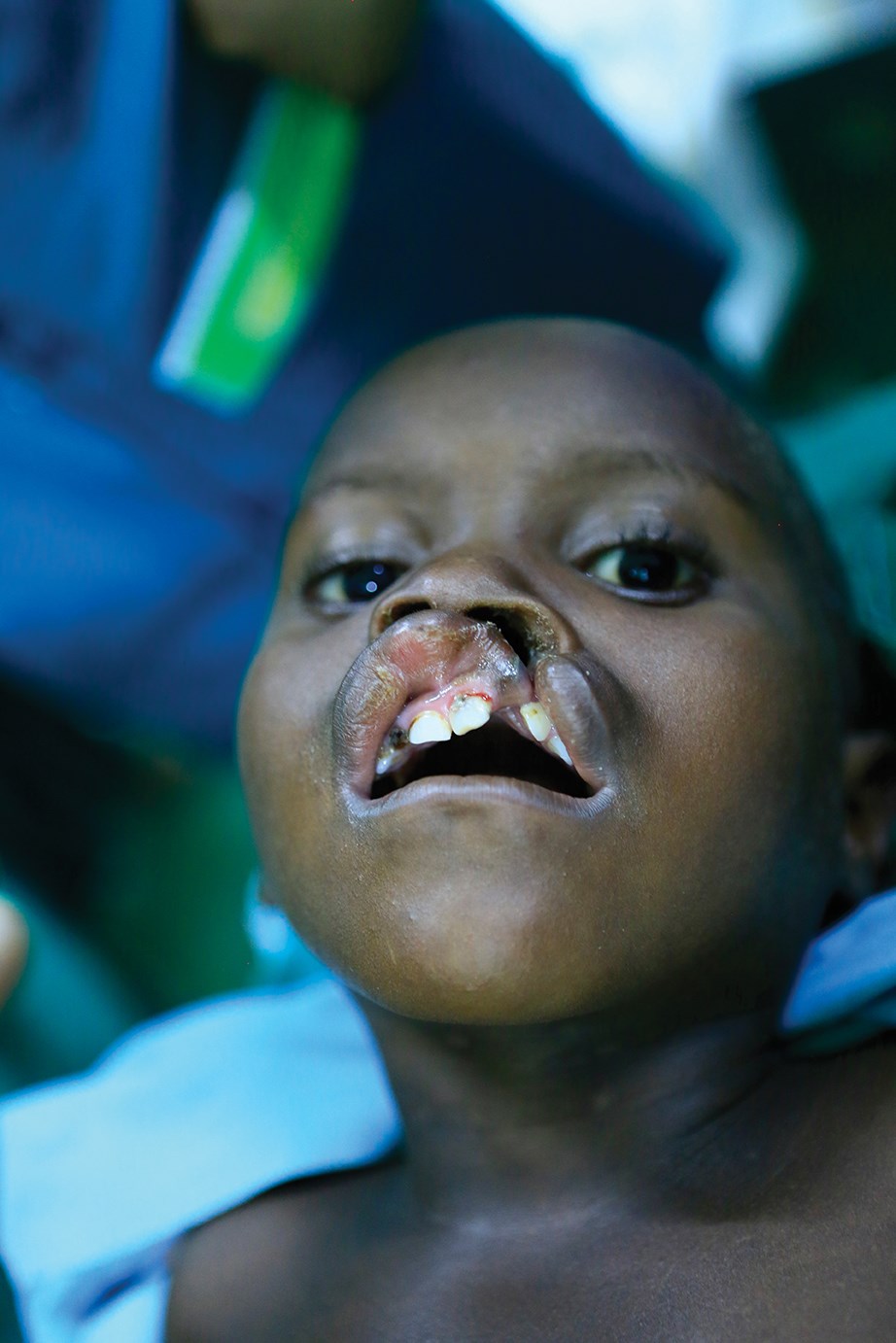
A selection of patients operated on by 2nd Chance surgeons in Burundi
in April 2013 (pictures from Dr Lionel Dumont, Anaesthesiologist).
The 2nd Chance association is a relative newcomer in the community of non-governmental organisations (NGOs) and aims to bring a different aspect to humanitarian aid. Missions are not so focused on operating on patients but on breaking down the isolation, which exists in the field of training in reconstructive surgery, by facilitating a permanent dialogue between the scientific communities in different countries. African surgeons are in desperate need of such contacts.
The project began more than 10 years ago, following the bombing of the US Embassies in Dar es Salaam and Nairobi, with a partnership between Dr Pierre Quinodoz and the Swiss Agency for Development and Cooperation (SDC). The directive was then to organise, outside capital cities, theoretical and practical courses on reconstructive surgery in the Great Lakes region of Africa. In 2010, 2nd Chance was then created as a non-profit organisation which aims to develop reconstructive surgery in regions which are economically underprivileged as well as in areas affected by war. The objectives were to widen this mandate from a geographical point of view; to supply material which is often lacking; to finance operations for indigent persons so that locally trained surgeons may use their new skills to treat their own populations. All those committed to the projects believe that it is only through educational empowerment that professionals in Africa will become qualified in handling these needs.
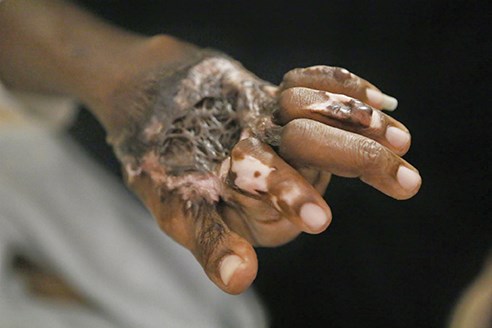
A female patient being operated on at the Harare workshop for
a contracture release of the hand following severe burns.
The activities of the association are structured around annual courses financed by the SDC, which allow for an introduction to basic techniques such as the treatment of cleft lip and palate, scar revision and skin grafting. These courses are held with the support of local medical authorities and in close co-ordination with a senior surgeon. Some 20 surgeons from the host country and the region are invited to the workshop, which is run over five working days.
The workshop is built upon theoretical and practical teaching in the operating room. Those two complementary didactic methods are key factors to success. The training takes place in a hospital equipped with a sufficient number of operating rooms not to disrupt too much routine surgical activity. It also requires the services of a qualified anaesthetist. The 13th workshop was held for the first time in Harare, Zimbabwe.
The workshop is sanctioned by a written test. No diploma is delivered but surgeons receive certificates for participating. The participants are introduced to:
- Establishing an indication for surgery and choosing appropriate techniques with regard to the given pathology such as contractures; congenital hand deformities; management of hand injuries; the design and applications of common flaps for the treatment of cleft lip and palate; and breast reconstruction.
- Acquiring an understanding of the effective surgical procedures in the field of reconstructive surgery.
- Preventing operative and anaesthetic complications.
- Ensuring follow-up of the patients in particular those requiring physiotherapy and pain management.
- Learning and applying the WHO integrated management for Emergency and Essential Surgical Care (IMEESC Toolkit).
- The network of telemedicine RAFT.
2nd Chance also aims to develop the possibility of the surgeons practising under the supervision of a mentor. The rehearsal of techniques is indeed essential to the realisation of quality interventions. Thanks to the support of the Edmond de Rothschild Foundations, 2nd Chance has been supporting ‘competence centres’ in reconstructive surgery for the last 18 months, with Professor Ahuka Lomgombe in Kisangani (Democratic Republic of Congo), with Dr Asrat Mengiste in Nairobi (Kenya) and Dr Edward Wayi in Dar es Salaam (Tanzania). These surgeons have accepted the duty of passing on their knowledge to other surgeons. The networks of expertise thus created are strengthened by the installation of a simple but modern system of telemedicine that facilitates communication between professionals and optimises the follow-up of patients, regardless of their geographical location.
In September 2013, the first two surgeons from Burundi went on a three-week mission with Dr Wayi in Dar es Salaam. They spent one week in rural zones in Tanzania to operate on particularly disadvantaged populations (see Case study 2). 2nd Chance plans to build upon this experience and support several African surgeons a year to attend two-week training missions within one of the competence centres.
Case Study 2
Abdulhamid was born in Tanzania with a cleft clip. Although in Tanzania this deformity is relatively common, his mother was greatly distressed and, furthermore, she did not know that a simple, free operation could provide an excellent cosmetic and functional outcome. Ten years ago he would have had to wait for a humanitarian mission for surgery because no local surgeon would have been available to take care of him. Due to the 2nd Chance mission in October 2013 Abdulhamid was operated on by African surgeons and is now back with his family. This mission is evidence that, when correctly supported, the African structures, based close to the realities of the most vulnerable populations, are particularly well adapted to a professionals’ south-south training. (Editor’s note: the concept of south-south co-operation may be new to some readers. This was a United Nations initiative to promote greater interaction between countries of the Southern Hemisphere and more can be found about this by visiting the UNOSSC website: https://sustainabledevelopment.un.org/unsystem/index.php?page=view&type=6&nr=6724&menu=1442&template=375)
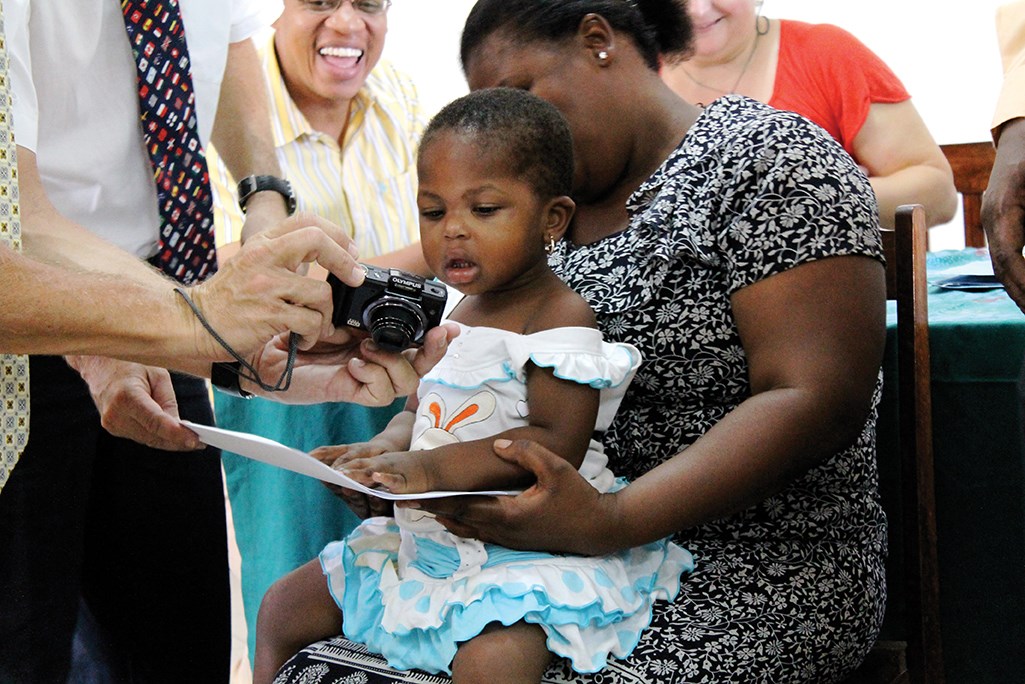
A young patient with syndactyly of the hand operated on in Tanzania in October 2013.
The last element of the project is to allow the trainers and trainee surgeons to benefit from adapted teaching equipment. For several years, Dr Pierre Quinodoz, President of the association and Dr Alberto Musolas, the surgeon in charge of training, have worked on the production of textbooks about reconstructive surgery, which are especially aimed at surgeons practising in Africa. These are currently distributed free of charge. Four volumes have been published on the following themes:
- wound healing, grafts and basic cutaneous flaps
- severe contractures management
- craniofacial trauma
- skin joint contractures.
With the development of computing tools and internet connections in Africa, the opportunity to complement the books by video materials has become an additional learning resource. With the support of a Spanish production company, 2nd Chance has developed four didactic movies on:
- unilateral cleft lip
- bilateral cleft lip
- palatal cleft
- revision and auxiliaryprocedures for cleft lip and palate patients.
The movies are built around a mix of text and surgical images taken from the textbooks as well as video footage from operations taking place on the 2nd Chance missions in Tanzania in October 2013 and February 2014. The movies are sponsored by Lynx for Hope.
Declaration of competing interests: None declared.
COMMENTS ARE WELCOME




